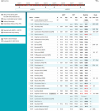Notchapple
Member
Currently on the 2O41, going to Earlsfield, journey was going fine until Wimbledon when the driver tried to set off and the train rolled back. He stopped the train and tried again, it rolled back. Power then went out for a few minutes(assume full restart) and the train was working. However, the guard then announced we were going fast to Waterloo and no one was allowed to get off the train.
Is there some sort of safety measure in place causing the guard to not reopen the doors?
Is there some sort of safety measure in place causing the guard to not reopen the doors?


